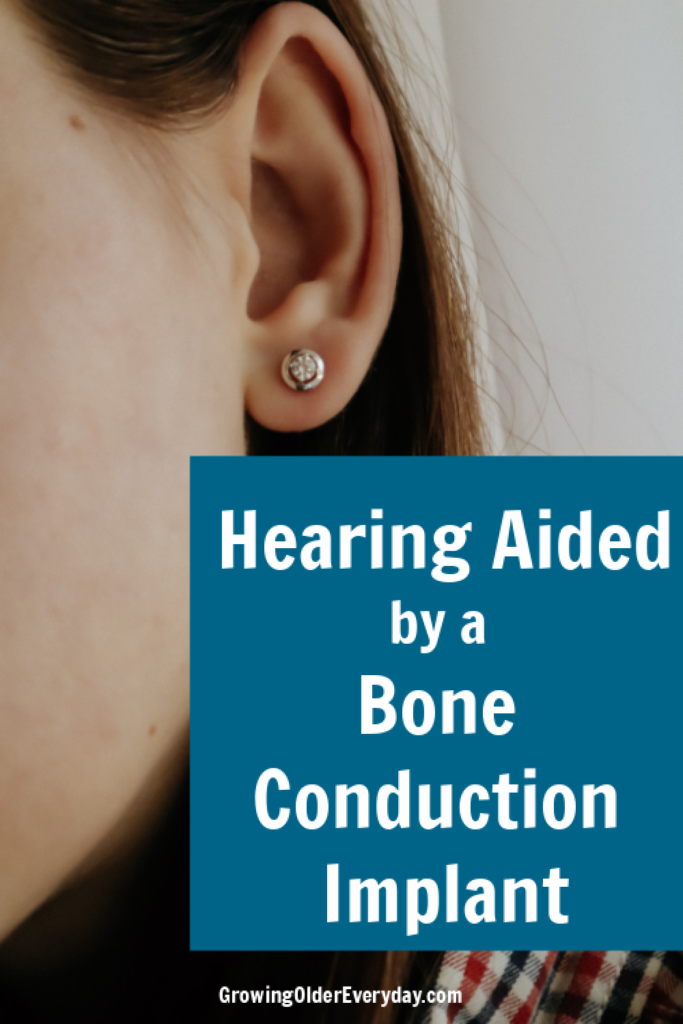
I love to learn new things. However, I learned about Med-El’s bone conduction implant the hard way. It all started with surgery in November of 2019 for a non-cancerous brain tumor. Since then I have been waiting for some type of hearing aid to compensate for the hearing I completely lost in my left ear. I never expected this would be the answer.
Med-El’s hearing aid implant is quite new. In fact, after I had my brain tumor surgery and I saw the audiologist, I had to wait until March for the surgery because it was not yet available in my area. Of course, March came and Covid-19 stopped surgeries so mine didn’t happen until July, four months later than I had expected.
Bone conduction implant options
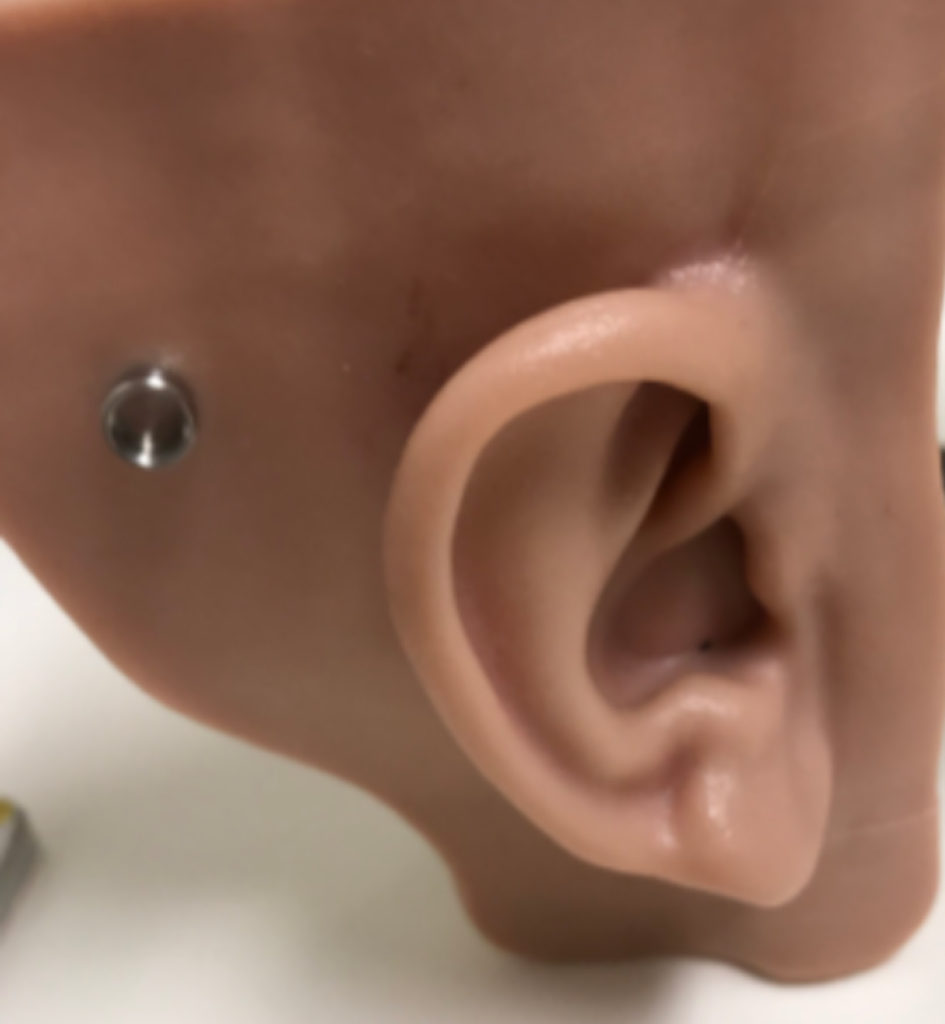
The audiologist tested my hearing and tested several options. It was easy to eliminate some of them. There was one which has a small smooth piece of metal sticking out, which required snapping the outside piece on. That wouldn’t have been so bad, but I looked at the little piece of metal that would be sticking out of my skull, and I knew that I would be one of the patients that would get an infection. Honestly, it grossed me out. Plus a big negative for me was having to have it removed every time I had an MRI. Having to take something out that had been previously put in my head by way of surgery was not something that I felt was a good option.
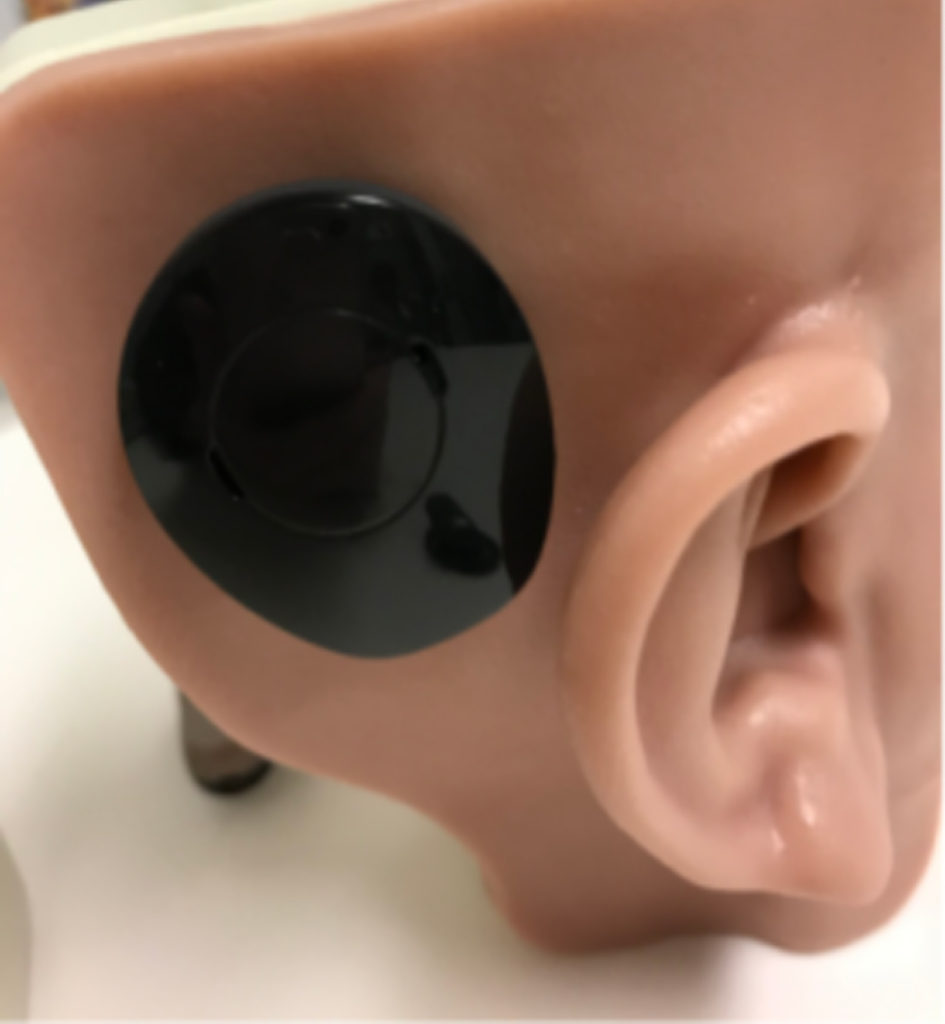
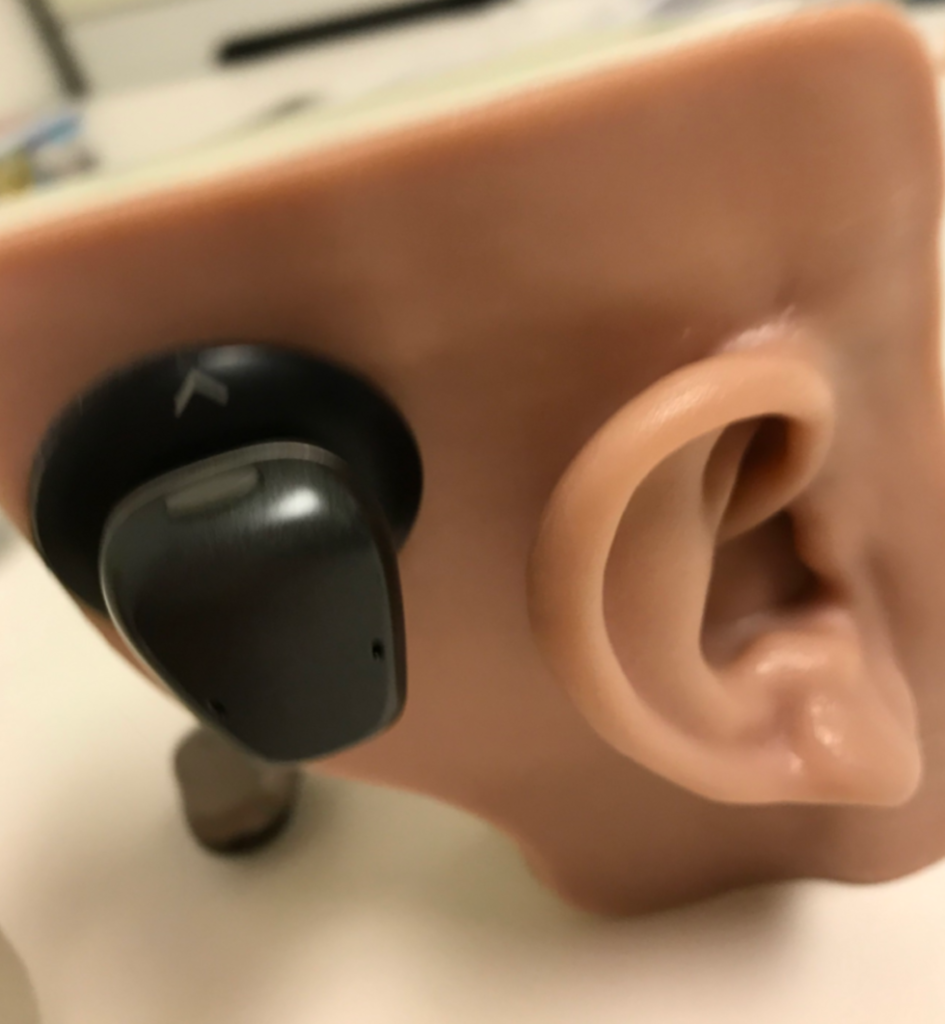
Others were so big and hard to hide. I didn’t want to be questioned by people as to what that was on my head. Or to have strangers, especially young children stare at me wondering what was wrong with me.
Typical cochlear implants involve a lot of pieces visible on your head and ear. They are pretty much impossible to hide. That is what I thought I would be getting before I saw the audiologist, but I was happy that there were so many options.
My choice for hearing
I selected the Bonebridge implant system. It is made of the Samba audio processor that attaches to my head and the Bone Conduction Implant. The Bonebridge system is made by Med-El and is the most innovative of my choices. I felt like maybe it was more innovative than I needed. My neurosurgeon over road me and said I should wait for the Bonebridge, instead of the second choice that I had chosen. A big plus of the Bonebridge was that it did not have to be removed for an MRI. Since I could end up having MRI’s every six months to a year in the beginning and then less often as the years went by, that was a big plus. I can’t imagine having it removed and then replaced again every time I needed an MRI to check the growth of the remainder of my tumor.
This was probably the most expensive option, but I didn’t ask that question. I knew this was something I would have as part of my body for the rest of my life, so how it performed and how it looked were important to me. Plus the neurosurgeon that I trusted felt it was the best choice.
The Surgery
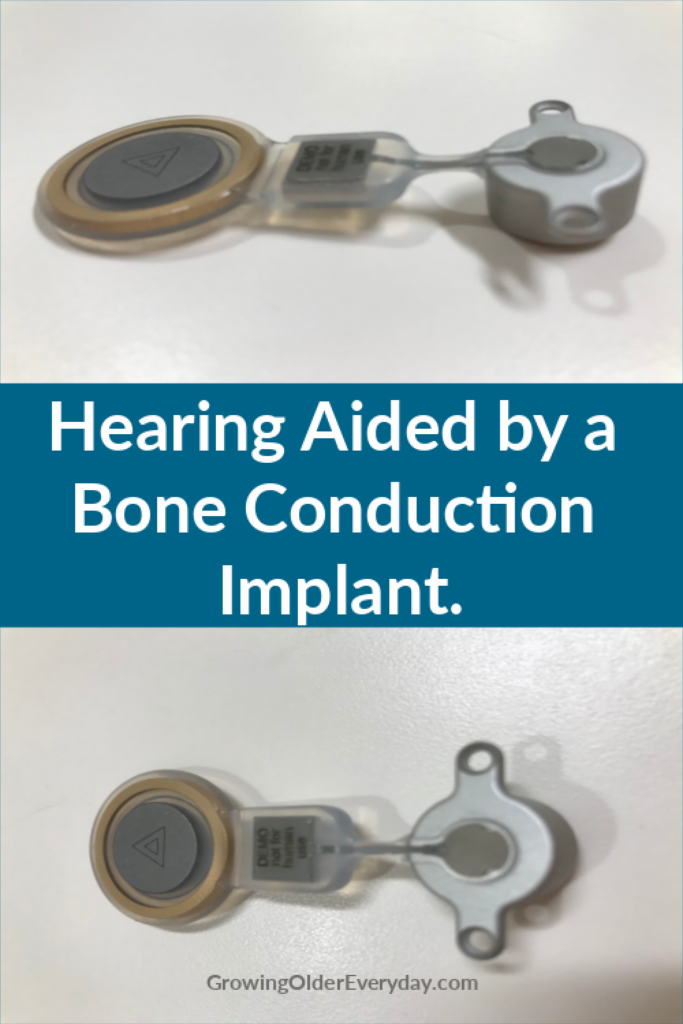
I had seen the Bone Conduction Implant that would go into my head prior to surgery. After surgery, it was easy to see it, even though they claim it is invisible under my skin. I had two new lumps on my head and of course, a new scar that needed to heal. The lumps align up with the implant. To the left are a side view and an overhead view of my implant. The large flat piece, which is the larger lump, is the audio processor, which has the magnet in it. It signals the transmission to the bottom part. This is where I attached the piece to my head each day.
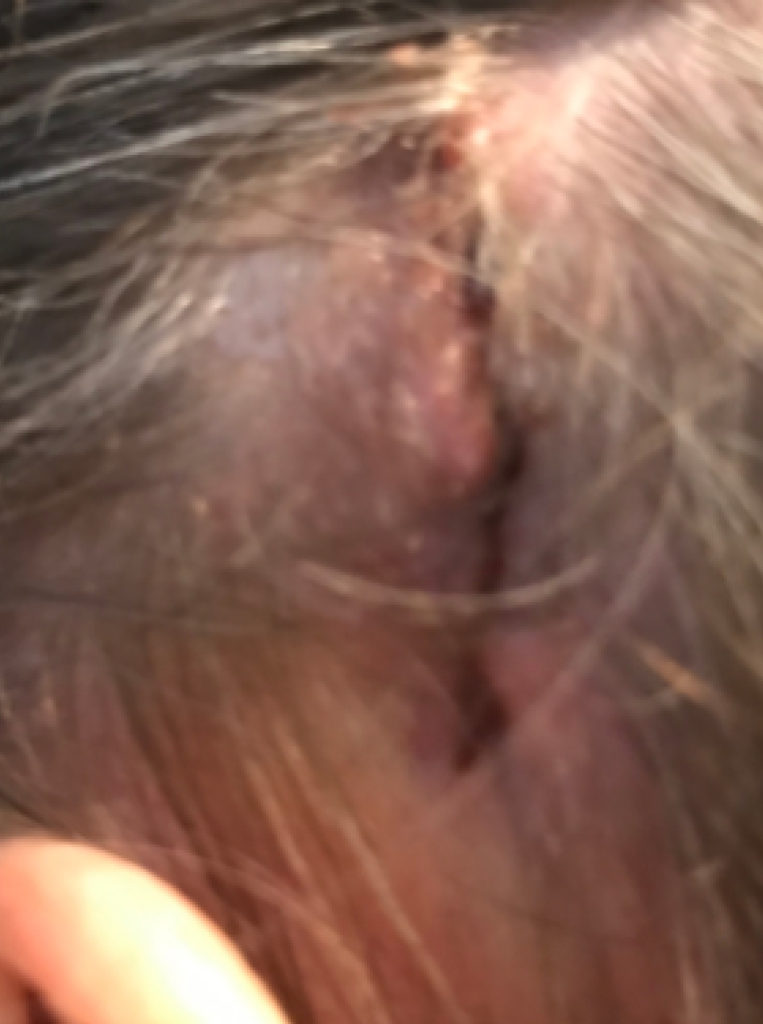
The smaller lump is the other end of the implant. It is thicker than the other part, but the lump is smaller because it is drilled into my skull and screwed on. This part converts the signal into a mechanical vibration. To the right is a picture of the scar, before my hair grew back. Actually, it is still growing back. The stitches, as with my first surgery are glue, so they go away on their own. They last about two weeks.
The actual surgery lasted about two hours and I went home the same day. My recovery was supposed to be one to two days. And that’s how it went. I did feel well enough on my way home to have lunch at In N Out Burger with my sister, who drove me to and from my surgery. Such a difference from how I had felt when I had my original surgery and spent four days in the hospital.
For anyone that is interested, the cost for this surgery, including the Bonebridge system, was over $32,000. A large portion of it was covered by my insurance.
Asethetic
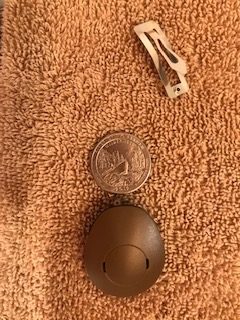
The great thing about the Samba is that it hides well under my hair. There is a piece of fishing line (or something that looks just like it,) that connects my Samba to a hair clip. My hair clip keeps it attached to my hair, in case I somehow get jarred and the Samba falls off. The picture to the right shows the size of my Samba compared to a quarter. It’s a bit bigger, and it is probably about 1/4 inch deep. It still is smaller than all the other options I was given. I will admit that if I wear my hair in a ponytail, it is pretty hard to hide. See the picture below.
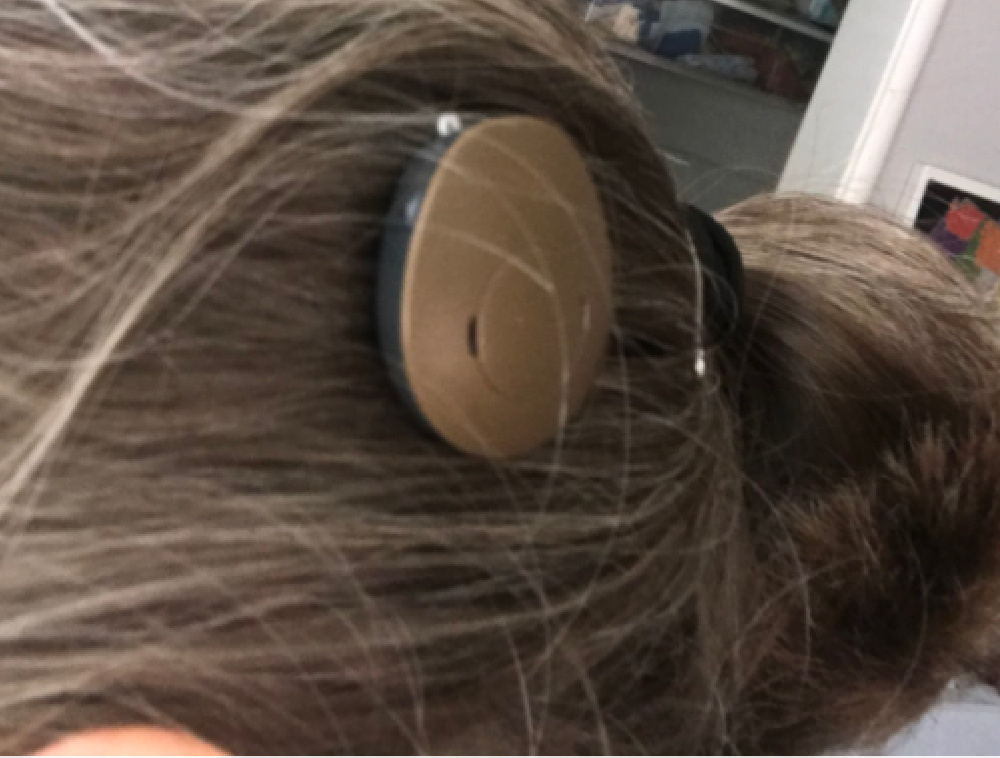
Accessories
In my box of accessories, there is another clip, called the activity clip, which helps hold the Samba in case I am more active and need extra gripping to my head. There is a remote to lower or raise the volume and to change the sound level I am in. I have 3 settings: normal, crowd, and loud music. These settings were installed by the audiologist and I can go in and have her add or remove settings as needed.
There are nine choices of covers for the Samba. I’m wearing the cover that I think matches my hair the best for now. Some day I will likely be wearing the grey one. If I wanted to show it off and have it be fancier I could purchase one that looks like a strawberry or one with a pattern on it. I don’t plan to show it off, but in time I could be less concerned about covering it up. Really, I still think I would avoid something like a strawberry that would draw attention to my head. Plus they are $15 each, plus shipping, so I’m pretty sure I don’t need one.
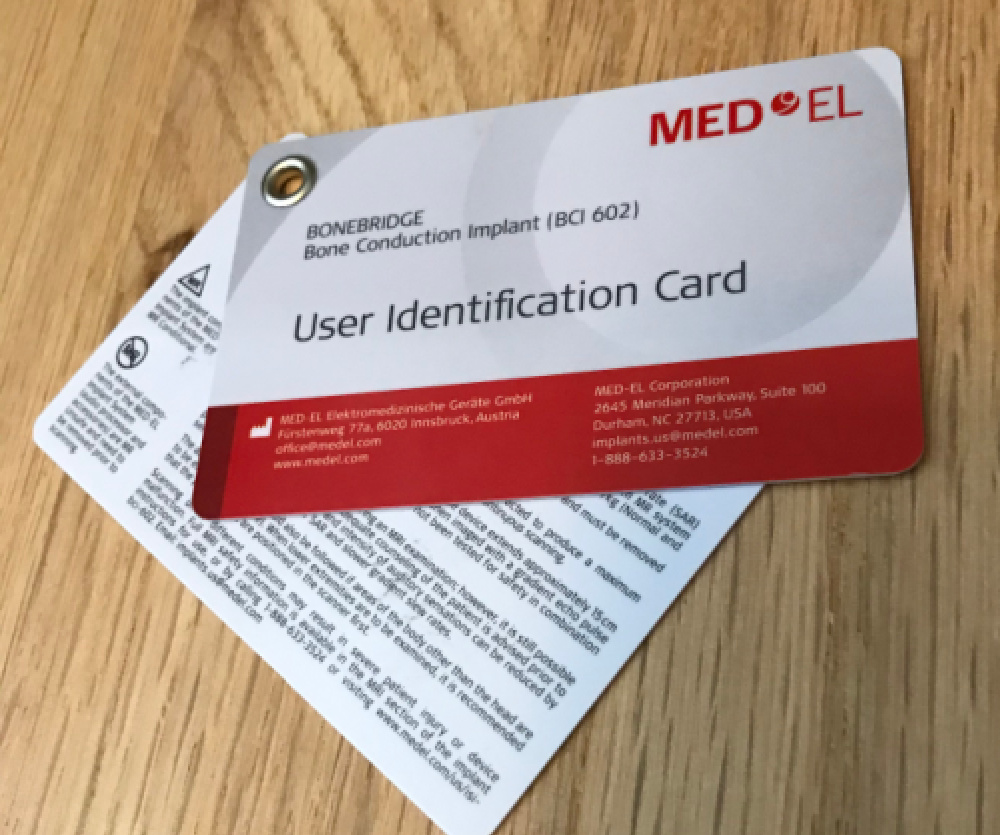
My required accessory isn’t advertised as an accessory. It’s my ID card to show to the TSA employees at the airport when I make the metal detector go off. It’s a two-piece card that includes my name, my surgeon’s last name, and the serial number of the implant. I have a plate and screws in my arm, that wasn’t this serious. It doesn’t set off metal detectors or require a card to identify that as the reason for setting off the alarm. So this is a little more serious.
Comfort
There is a magnet in the exterior part of my hearing aid. The audiologist told me she was starting with the strongest magnet. It seemed a bit tight, pinching my skin between the two pieces, but I thought that was what was normal. When I went to the follow-up appointment she replaced it with a magnet that wasn’t quite as strong, saying the one I had was too tight. I noticed the difference. It was much more comfortable.
The Samba is really lightweight, weighing less than 9 grams. I don’t really feel like I have something on my head. It is the lightest bone conduction audio processor currently on the market. Plus the sound quality is different from other audio processors. Others vibrate. The Samba is smarter and doesn’t vibrate. It sends a signal to the implant, which converts into a mechanical vibration. This is sent to the inner ear by way of bone conduction. Honestly, I don’t really understand how it works, I just know it does. As I said, it’s innovative.
Small glitches
In the first week, I had problems getting it to attach to my head. I have two lumps on my head from the implant surgery and unfortunately, I don’t always find the right one, first try. Also, it fell off a few times but hasn’t since. Thanks to the hair clip, it didn’t fall to the ground.
At my two week appointment, my audiologist made adjustments on the outside part. I had to go into the testing booth and listen to heavy noise and repeat what a guy said after he said “ready,” while the other people kept talking. It was difficult, as it was the first time I did it. It had to be adjusted a second time. I started with 0% hearing, prior to surgery. My first adjustment put me to 8% and then 28%, which is what I tested at with hearing aids she used on me before my surgery. She was happy with that. It seems fine to me.
Also, my remote was not working correctly. A new one was ordered and arrived at my house in less than a week, with an envelope to send the other back. Apparently this is not a common problem, so they will be checking to see what happened. I have a 5-year warranty for the implant, 2-year for the Samba, and one year on the remote. Without the remote, the volume will not change. One day I had the volume up so high that I could hear my hair brushing against it with every move I made. I was happy I could turn that down.
The future
I do not have a future appointment scheduled. If I have any more difficulties I can make another appointment to have more adjustments. I need to see my audiologist once a year to check on how everything is operating.
Batteries have to be changed regularly in the Samba. Battery life is expected to be one day to ten days. Fortunately, they have been running about 9-10 days for me. Part of that is because I usually wear it twelve or fewer hours a day.
I am adjusting to life with a Bonebridge hearing aid system. It doesn’t seem likely to me at this time that I will ever think of it as normal. Especially because I start my day by putting it on and end my day by taking it off. Time will tell.
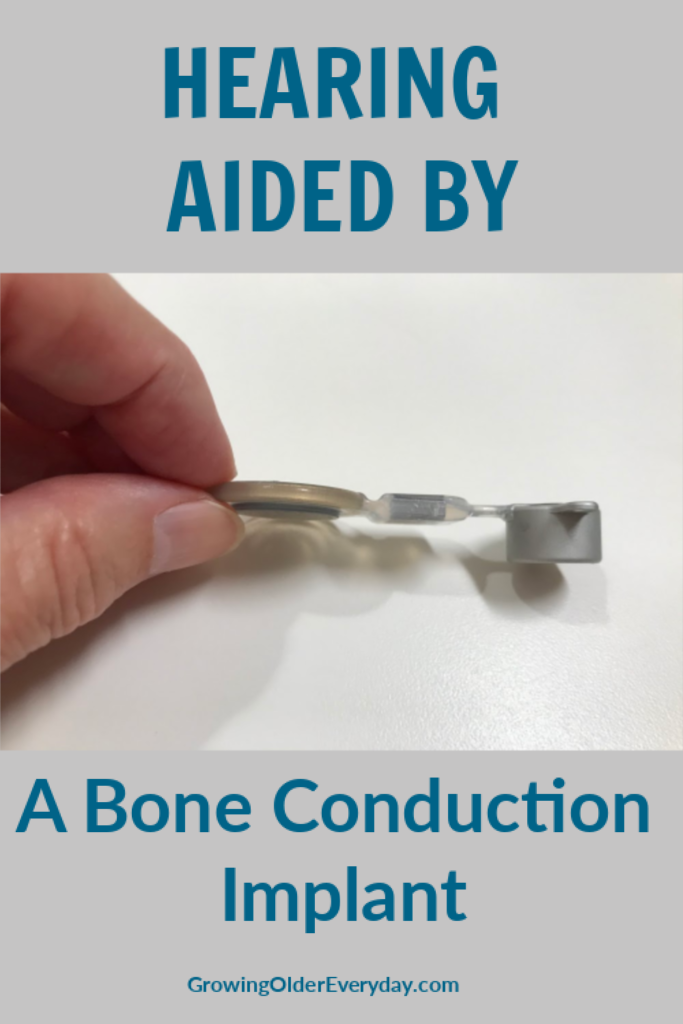
This was so interesting to learn about. I am so glad the implant system helped your hearing a bit. It’s also pretty cool how they could make it to be similar to a clip like you showed in your picture. Thank you for sharing.
Cassie, Thank you for your comment. It is interesting that such a thing exists. Had I not gone through this whole experience, I would never have known about it. Learning new things is always a good thing.
I’m glad it’s helped your hearing improve. 28% is better than 0%. As with all things, technology keeps improving. In the next 2-5 years there may be a new and improved model.
Thank you Carol for commenting. It is amazing how much of a difference 28% makes compared to 0%. You do never know with technology.